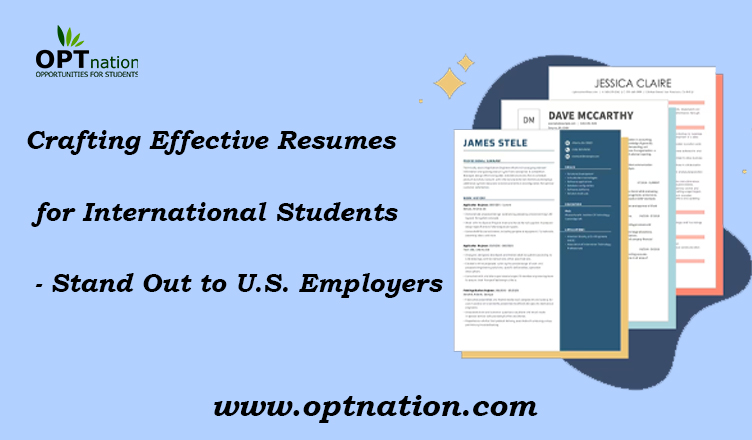For international students aiming to secure opportunities in the United States, understanding how to write an effective resume that caters to U.S. employers is crucial. It is worth understanding how and when to turn to a skilled and qualified paper writer for help if you know your weak points in advance. In this article, we’ll dissect the anatomy of an American resume, detailing the nuances, sharing actionable tips, and offering a step-by-step approach to ensure your resume stands out.
Understanding the U.S. Resume Format
Unlike CVs prevalent in many other countries, U.S. resumes typically follow a reverse-chronological layout, listing the most recent experience first. They’re concise, direct, and employer-oriented, focusing on the candidate’s skills, accomplishments, and relevant experiences.
Crafting a Compelling Resume Introduction
Begin your resume with a concise introduction or objective statement. This section should summarize your career goals and highlight your unique selling points. It sets the tone for the rest of your resume and provides context for recruiters, making it easier for them to understand your career trajectory and aspirations.
Highlighting Relevant Experience and Achievements
Your work experience is one of the most crucial sections of your resume. Here, highlight your relevant professional experiences, whether paid or unpaid. Describe your roles, responsibilities, and, most importantly, your achievements. Where possible, quantify these achievements with tangible metrics, showing the potential impact you can bring to the employer’s organization. Ensure you use active language and power words, such as “achieved,” “earned,” or “accomplished.”
Streamlining the Education Section
The education section should clearly outline your academic qualifications. List all your degrees, diplomas, and certifications in reverse chronological order. Also, highlight any relevant coursework, academic achievements, or honors. For international students, detailing any U.S. qualifications or certifications can be particularly advantageous.
Including Appropriate Personal Information
While you should include essential personal information, be cautious about sharing excessive details. U.S. recruiters focus on your skills and qualifications rather than personal attributes. Therefore, limit your personal information section to your full name, contact number, professional email address, and LinkedIn profile or personal website (if applicable). For international students, it’s essential to clearly state your work authorization status.
Optimizing for Keywords and ATS Compatibility
With the proliferation of Applicant Tracking Systems (ATS), it’s vital to optimize your resume with relevant keywords. These keywords should align with the job description and required skills listed in the job posting. Including these keywords increases the chances of your resume passing through ATS filters and catching the recruiter’s attention.
Prioritizing Brevity and Simplicity
Aim for a one to two-page resume that’s easy to read and visually appealing. Use a clean, professional font and well-structured bullet points to ensure readability. Also, maintain reasonable margins and spacing. Remember, your resume should be a summary of your skills and experiences, not an exhaustive autobiography.
Emphasizing Skills and Proficiencies
The “Skills” section is your chance to showcase your abilities. List both hard skills (technical abilities or job-specific skills) and soft skills (interpersonal skills, problem-solving, etc.). Make sure the skills you list align with the job requirements. Highlighting language proficiencies can be a significant advantage for international students.
Crafting a Professional Summary Statement
Replace the old-fashioned “career objective” with a modern “summary statement.” This section should succinctly encapsulate your education, skills, experiences, and achievements. Use it to explain why you’d be an excellent fit for the role. Remember, this section plays a pivotal role in capturing your potential employer’s attention, so make it count.
Ensuring Proper Effective Resume Length and Format
While U.S. employers prefer a particular format for resumes, you should also be mindful of the length. For most roles, a one to two-page resume is acceptable. However, if you’re applying for senior-level roles or positions in academia or research, a longer resume might be necessary.
Including a Cover Letter
While not always explicitly required, it’s a good practice to include a personalized cover letter with your resume. A well-crafted cover letter can help you stand out and provide additional context to your resume. Make sure to tailor each cover letter to the specific job and company you’re applying to.
Proofreading and Review
Before you hit the ‘submit’ button, take the time to meticulously proofread your resume. Look out for any grammatical errors, spelling mistakes, or inconsistencies. Having a second pair of eyes review your resume can also be beneficial.
Remember, writing an effective resume is an art. It requires a strategic approach and a good understanding of U.S. employers’ expectations. By following these tips, you can create a standout resume that not only highlights your qualifications and skills but also showcases your unique perspective as an international student.
Your journey to landing your dream job in the United States begins with a standout resume. Make it count!

